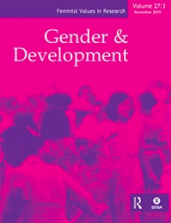A sexual and reproductive health rights approach to menstruation

Overview
While increased attention to menstruation as a significant health issue for women and girls is positive, some menstrual interventions promoted by Water, Sanitation, and Hygiene (WASH) programmes primarily focus on hygiene, infrastructure, and product provision. This focus fails to challenge the social and cultural stigma surrounding menstruation, as well as interconnected issues of gender discrimination, marginalisation, and inequality. We advocate approaching menstruation as a matter of sexual and reproductive health rights (SRHR), which recognises that sexual and reproductive health depends in part upon the realisation of the rights that support it. This requires a holistic approach to menstrual health that includes addressing shame, social stigmas and restrictions, and gender inequality, in addition to providing access to menstrual-friendly toilets. This holistic approach should also include comprehensive and community-driven sustained training and education about sexual and reproductive health and rights. Drawing upon research on four grassroots NGOs in India, Goonj, Barefoot College, Jatan Sansthan, and EcoFemme, we demonstrate that locally based NGOs are well-placed to create community-based educational trainings, provide access to context-specific and culturally appropriate menstrual products, and, perhaps most significantly, to challenge stigma around menstruation.
Keywords
Additional details
Author(s)
How to cite this resource
Citation styles vary so we recommend you check what is appropriate for your context. You may choose to cite Oxfam resources as follows:
Author(s)/Editor(s). (Year of publication). Title and sub-title. Place of publication: name of publisher. DOI (where available). URL
Our FAQs page has some examples of this approach.
